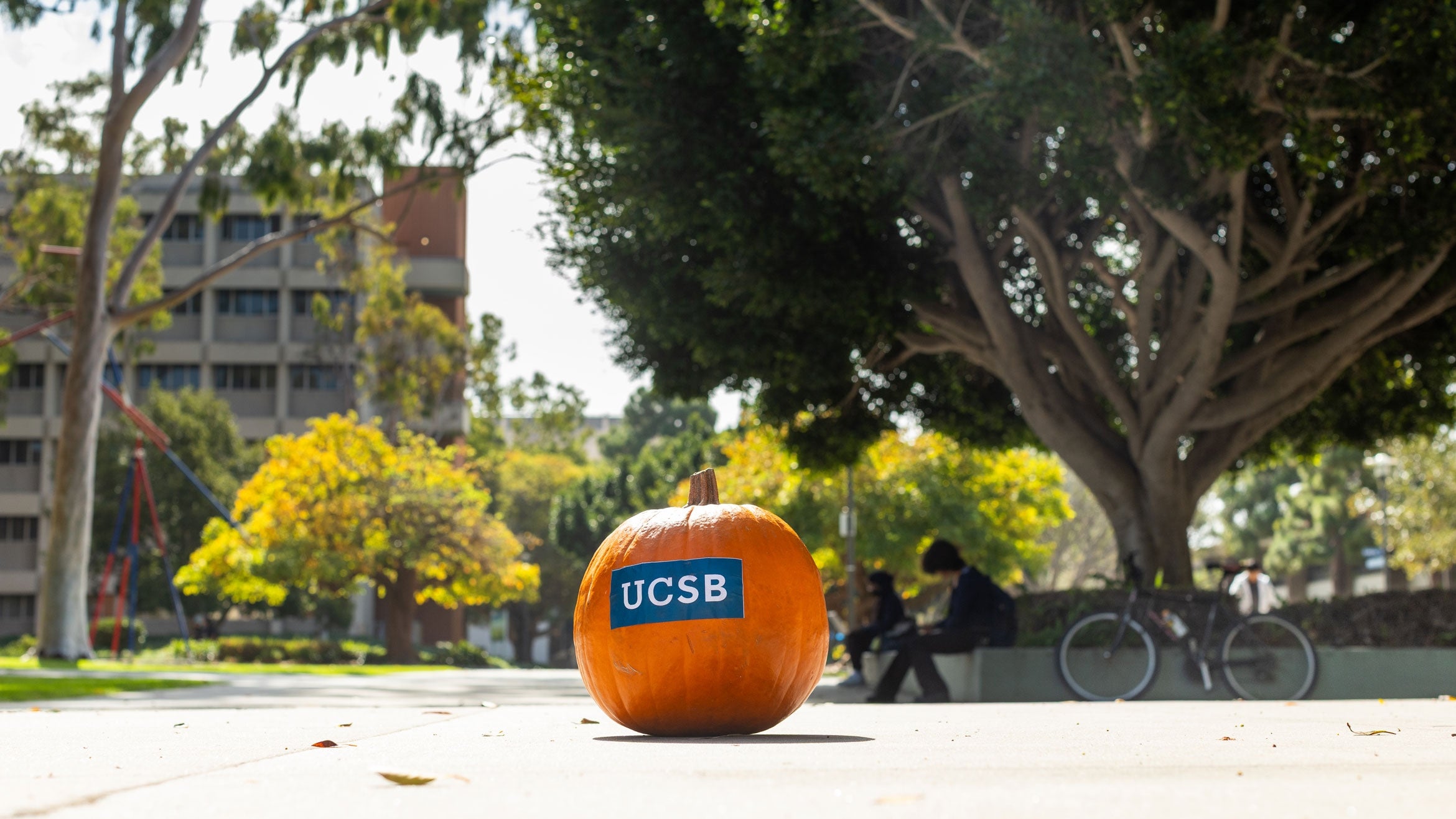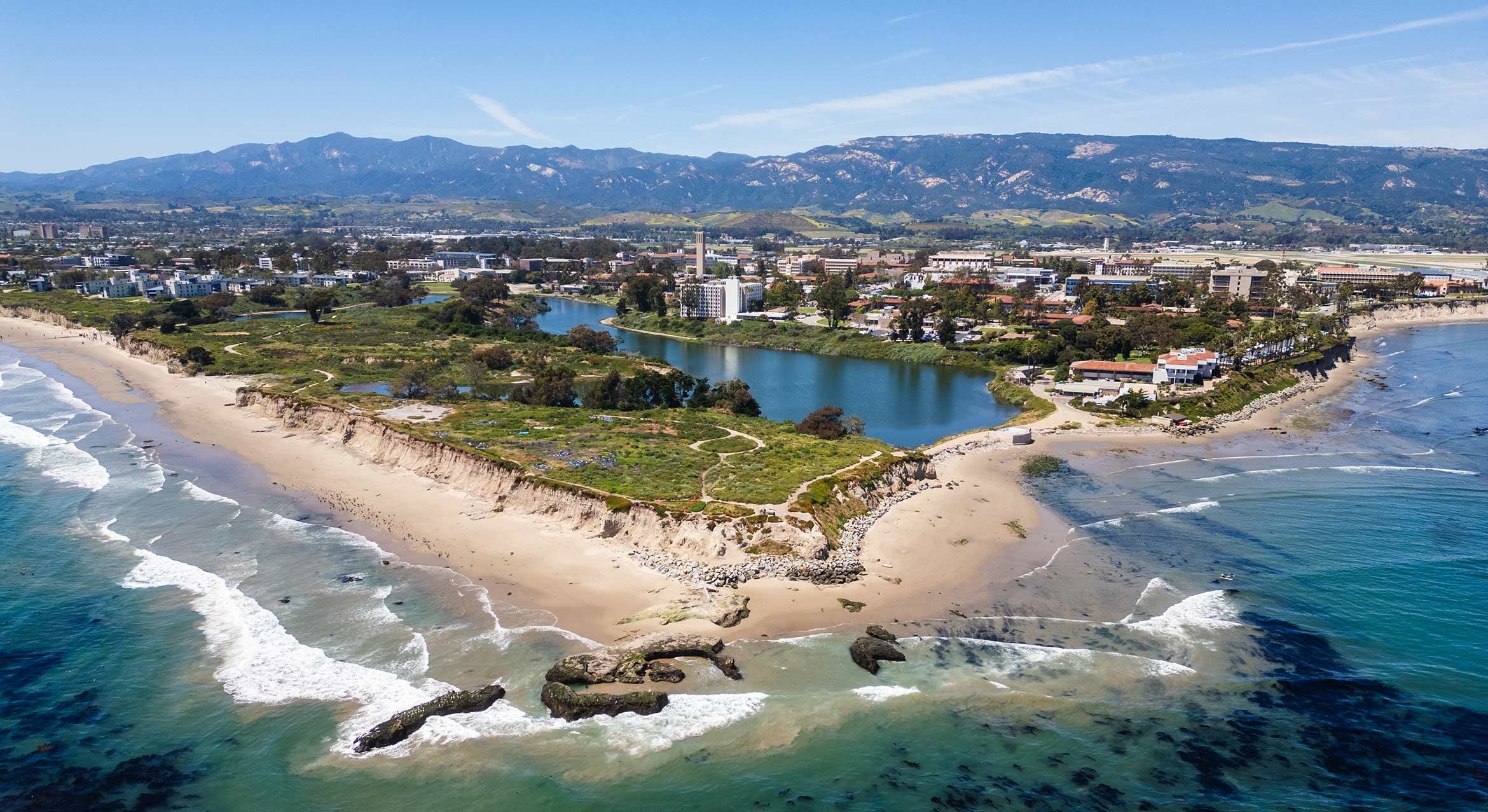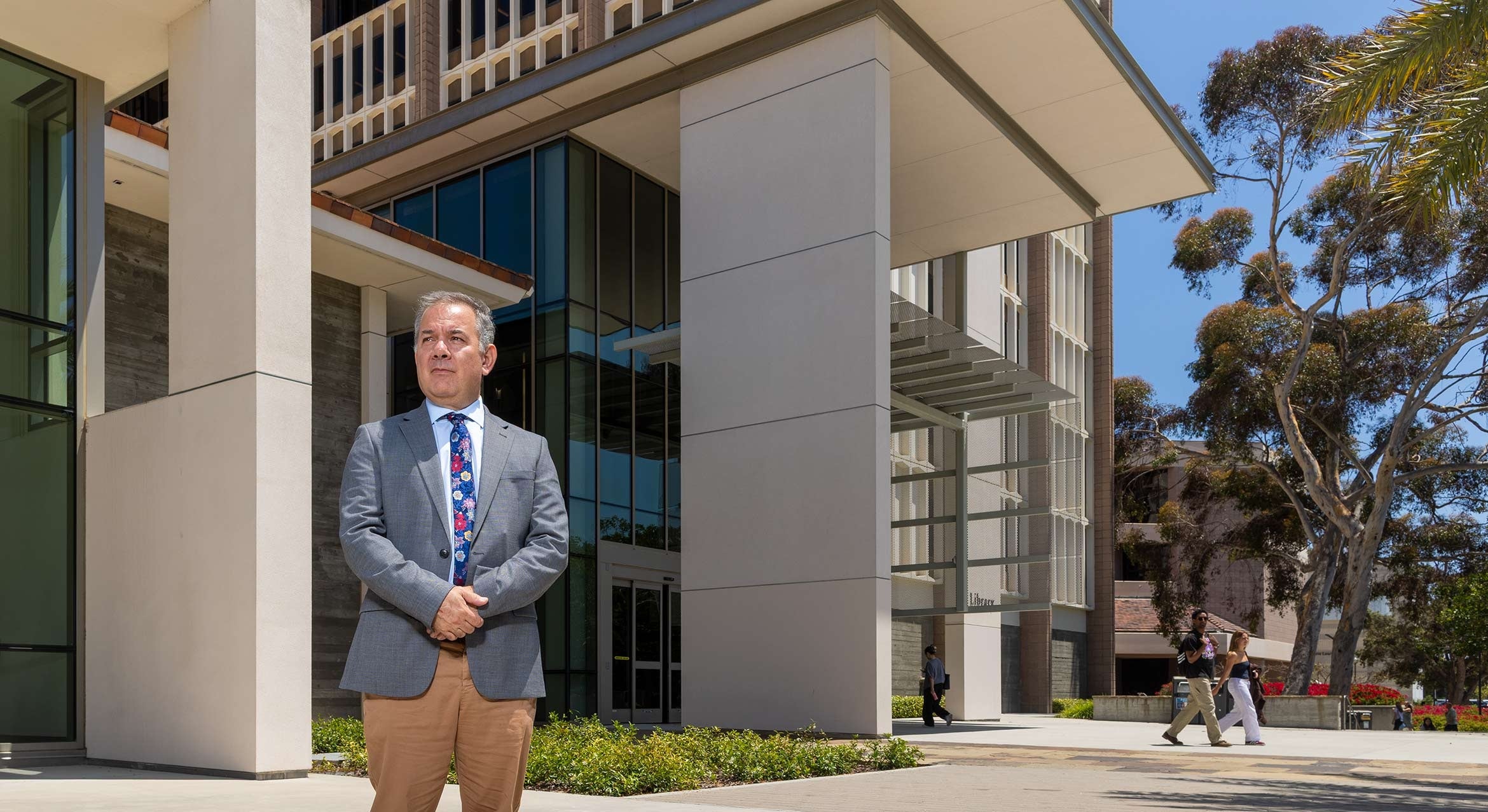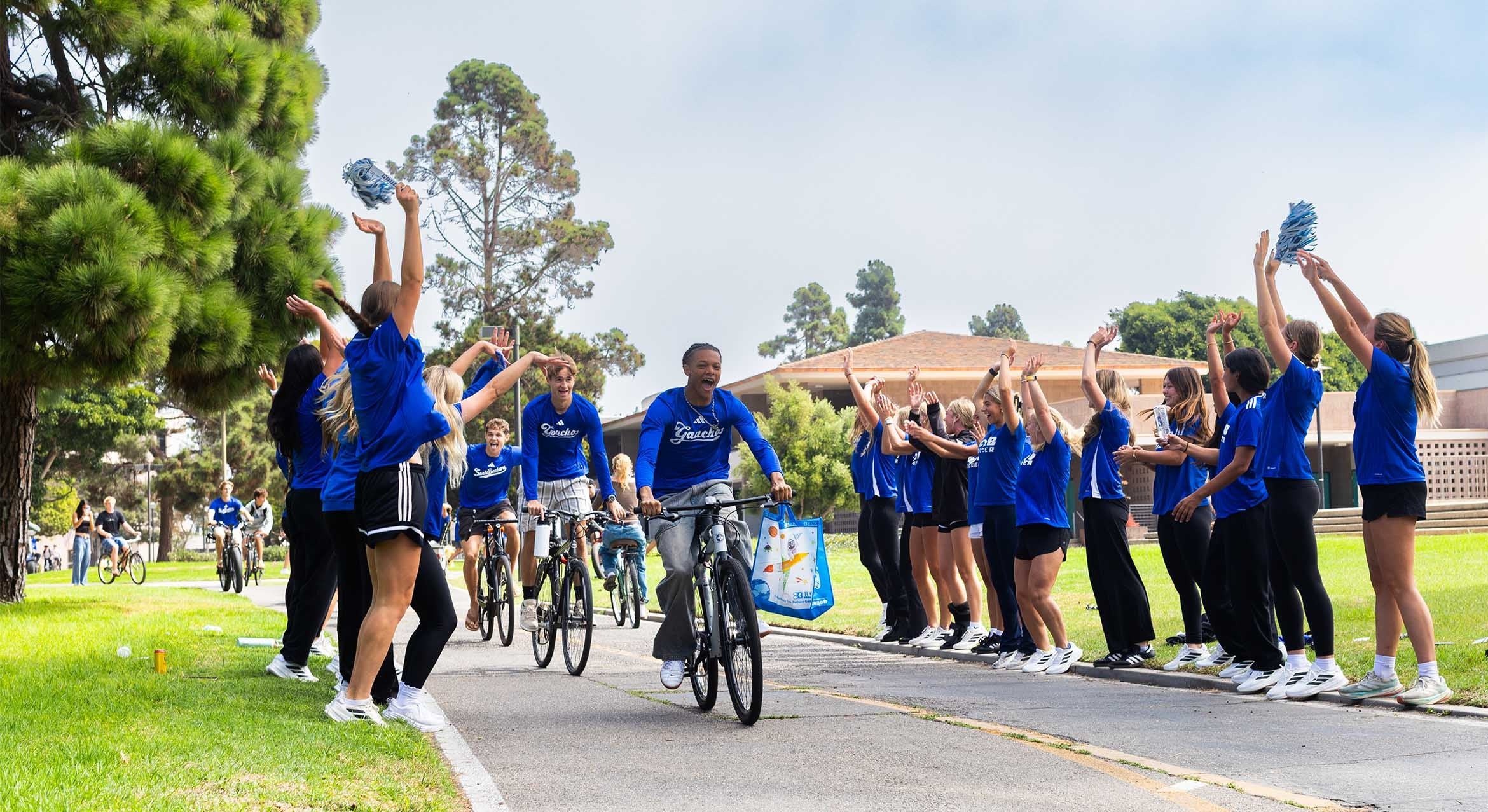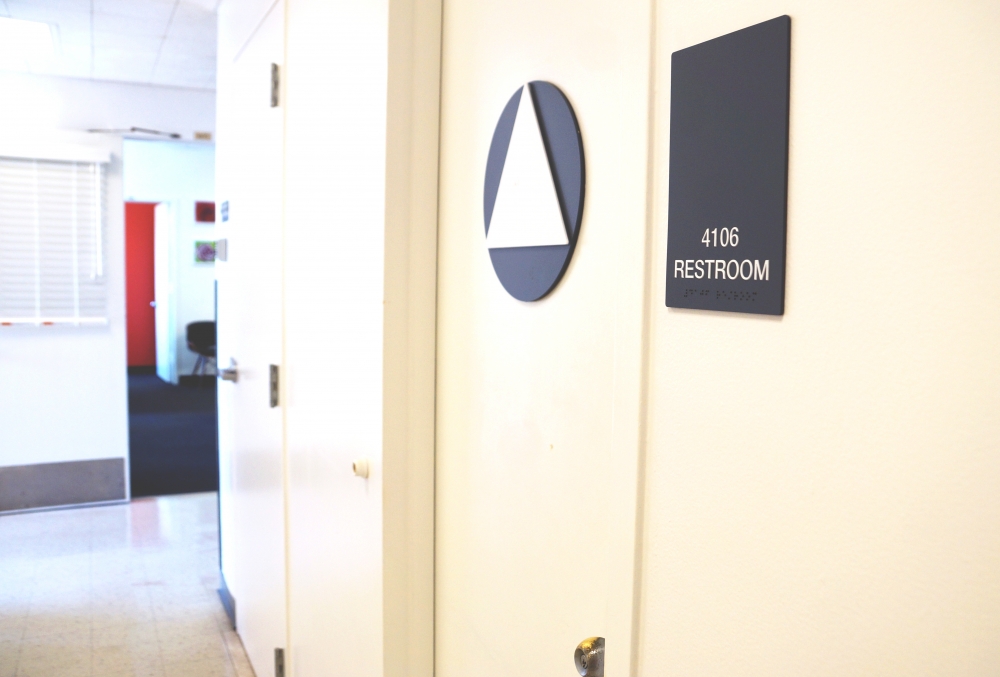
Safe and Welcoming
A new online map of gender-inclusive restrooms at UC Santa Barbara marks a milestone in creating a safe and welcoming campus environment.
The culmination of a University of California policy outlining the provision of gender-inclusive facilities on all UC campuses, UCSB’s initial effort to meet the mandate includes 60 single-stall gender-inclusive restrooms across campus.
The restroom doors feature images of triangles interposed upon circles — international symbols for men and women, respectively — which indicate anyone can use the facility. Additional signage simply says “restroom.”
“The idea is to pull back wherever we are purposefully gendering space, when it doesn’t necessarily have a use,” explained Christine Dolan, associate director of UCSB’s Resource Center for Sexual & Gender Diversity. “This is not only for utility but also because many people don’t identify within the gender binary, and even if they do, oftentimes they don’t feel safe using those gendered spaces.”
Accommodating the gender spectrum is not new for UC Santa Barbara. Long before a UC policy was in place, the campus responded to the request of Eucalyptus, the university’s Committee on Lesbian, Gay, Bisexual, and Transgender Concerns, by converting a restroom in El Centro as part of a building renovation so it could be used by anyone.
“The campus has made great progress in this area and will continue to make progress,” said Marc Fisher, vice chancellor for administrative services, who oversees the implementation of UC Santa Barbara’s policy on gender-inclusive facilities. “We’re figuring out how to move forward, but our intention is to keep growing this program and make it comfortable for everyone on the campus in terms of access to restrooms.”
This fall, a pilot project in the library is changing a men’s room on the first floor into a multiuse gender-inclusive facility with two urinals and two stalls. Ultimately, one stall will be removed to accommodate a large single stall with private floor-to-ceiling doors for added safety and security.
An additional benefit of the gender-inclusive restroom initiative is the implementation of Quick Response codes on campus buildings. The QR codes can be scanned with a smartphone to provide the location of a gender-inclusive restroom. If one isn’t located in a particular building, the next closest will be identified.
Going forward, all new buildings or major renovations on campus will be required to have gender-inclusive bathrooms. “Getting gender-inclusive restrooms into the UCSB building code is an important victory,” said Leila Rupp, interim dean of social sciences and former co-chair of Eucalyptus. “I think the whole program is terrific, and it happened because of long-time campus activism around the issue.”
In the meantime, wherever possible, additional single-stall restrooms will be converted to gender-inclusive. A case in point is the single-stall restroom on the second floor of the new faculty club, scheduled to open later this year. According to Fisher, this location can do double duty as a gender-inclusive, accessible restroom. “It makes a really good combined restroom to accommodate a broad part of our community,” he said.
The next phase of the program will focus on retrofitting additional single-use restrooms, discussions about which will begin this fall.
